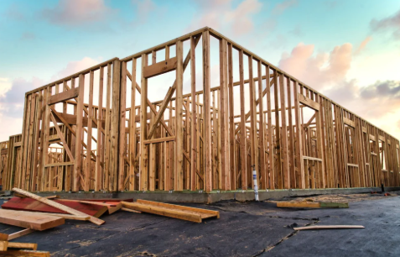
In an age of sleek finishes and synthetic shortcuts, timber framing offers something few modern materials can: substance. There’s a quiet grandeur to exposed beams that hold not only the weight of a home but the stories it gathers over time. The appeal isn’t rooted in nostalgia—it comes from discernment. Choosing timber is a commitment to craftsmanship, to the feel of hand-hewn structure beneath polished design.
Bespoke estates, mountain retreats, and coastal getaways are embracing timber as both a form and a functional element. No longer reserved for rustic cabins or historical reproductions, it’s becoming the architectural signature of homes designed with permanence in mind. That kind of durability begins with sourcing, ensuring the materials behind the beauty are as intentional as the design itself.
Timber Framing: A Legacy Reimagined
Timber framing is one of the oldest construction methods still in use, with roots stretching back over a thousand years. Its defining feature—large wooden beams joined through precise mortises and tenons—was born out of necessity, but it has endured because of its unmatched integrity. Even today, century-old timber structures still stand with their bones intact.
But legacy doesn’t mean limitation. What makes timber so compelling in modern architecture is its versatility. Exposed beams now punctuate minimalist interiors, support walls of glass, and create sculptural silhouettes in high-end homes from Sonoma to the Adirondacks. The result is a structure that’s grounded in tradition yet tailored for contemporary living.
This combination of permanence and adaptability has made timber framing a fixture in the modern luxury design conversation, bringing dimension and character to spaces that resist uniformity.
Why Luxury Homeowners Are Returning to Timber
Today’s most desirable homes are built for experience, not just for show. Timber answers that desire by introducing depth, grain, and natural richness into a space. In a design climate that leans toward warmth and authenticity, timber brings presence, materiality that speaks without decoration.
Its applications are broader than many expect. In vineyard estates and mountain chalets, heavy beams lend drama to vaulted ceilings. In beachside retreats, they offset glass and concrete with organic contrast. Even in urban townhomes, refined timber details offer warmth without compromising clean lines.
Luxury buyers are seeking more than style—they’re looking for individuality and longevity. With timber framing, every beam tells its own story, and no two homes feel alike.
The Role of the Timber Frame Supplier
Behind every remarkable timber frame home is a supplier who brings more than raw materials to the table. The right timber frame supplier plays a crucial role in shaping the very essence of the structure, offering expertise in species selection, joinery craftsmanship, and architectural compatibility.
Sourcing is more than logistics. Reputable suppliers prioritize sustainable harvesting and collaborate closely with architects and builders to ensure structural integrity and aesthetic cohesion. They understand that every detail—from the cut of the wood to its placement—impacts the way a home looks, feels, and lives.
In regions like New Stanton, PA, where traditional craft still runs deep, builders turn to experts like Tuscarora Timber Frame to bring these legacy techniques into modern projects. Their work becomes both the framework and the focal point of homes meant to last.
Marrying Timber With Modern Elements
One of the most dynamic shifts in residential design today is the way timber is being used in conjunction with modern materials. Instead of leaning rustic, it’s being applied with restraint, balanced with steel, stone, or glass to create homes that feel both grounded and clean-lined.
Designers are treating timber as a structural accent that adds depth and warmth. Beams might be left raw to emphasize texture or finished to blend seamlessly into minimalist interiors. Either way, the wood doesn’t just support the home—it defines it.
The resurgence isn’t limited to private residences. Timber is making its mark in ambitious urban architecture as well. As Architectural Digest reports in its feature on the world’s tallest timber-framed building, this centuries-old method is helping to shape the skyline. Its enduring appeal lies in its strength, simplicity, and honesty.
Designing With Intention: From Blueprint to Beam
Building with timber invites a more thoughtful process. These homes aren’t mass-produced—they’re shaped through careful dialogue between architect, builder, and supplier. Each beam is selected for a reason. Each connection is considered.
Homeowners are often involved from the beginning, selecting wood species based on their durability, grain pattern, and regional authenticity. This level of engagement results in homes that feel deeply personal, structures that reflect not only aesthetic preferences but values.
For readers interested in how wood selection influences long-term results, architectural applications of timber beyond interiors offer insight into how structural choices contribute to both beauty and longevity.
Timber doesn’t shout. It settles in, adding warmth where walls meet ceilings, and intention where space meets form. In homes built to endure, it becomes part of the atmosphere—anchoring light, guiding the eye, and telling a quiet story of craft.
When used thoughtfully, timber framing creates more than visual interest. It sets a tone. It requires careful planning and rewards it with the result. And in an age where permanence is rare, that kind of architecture feels especially meaningful.


(0) comments
We welcome your comments
Log In
Post a comment as Guest
Keep it Clean. Please avoid obscene, vulgar, lewd, racist or sexually-oriented language.
PLEASE TURN OFF YOUR CAPS LOCK.
Don't Threaten. Threats of harming another person will not be tolerated.
Be Truthful. Don't knowingly lie about anyone or anything.
Be Nice. No racism, sexism or any sort of -ism that is degrading to another person.
Be Proactive. Use the 'Report' link on each comment to let us know of abusive posts.
Share with Us. We'd love to hear eyewitness accounts, the history behind an article.